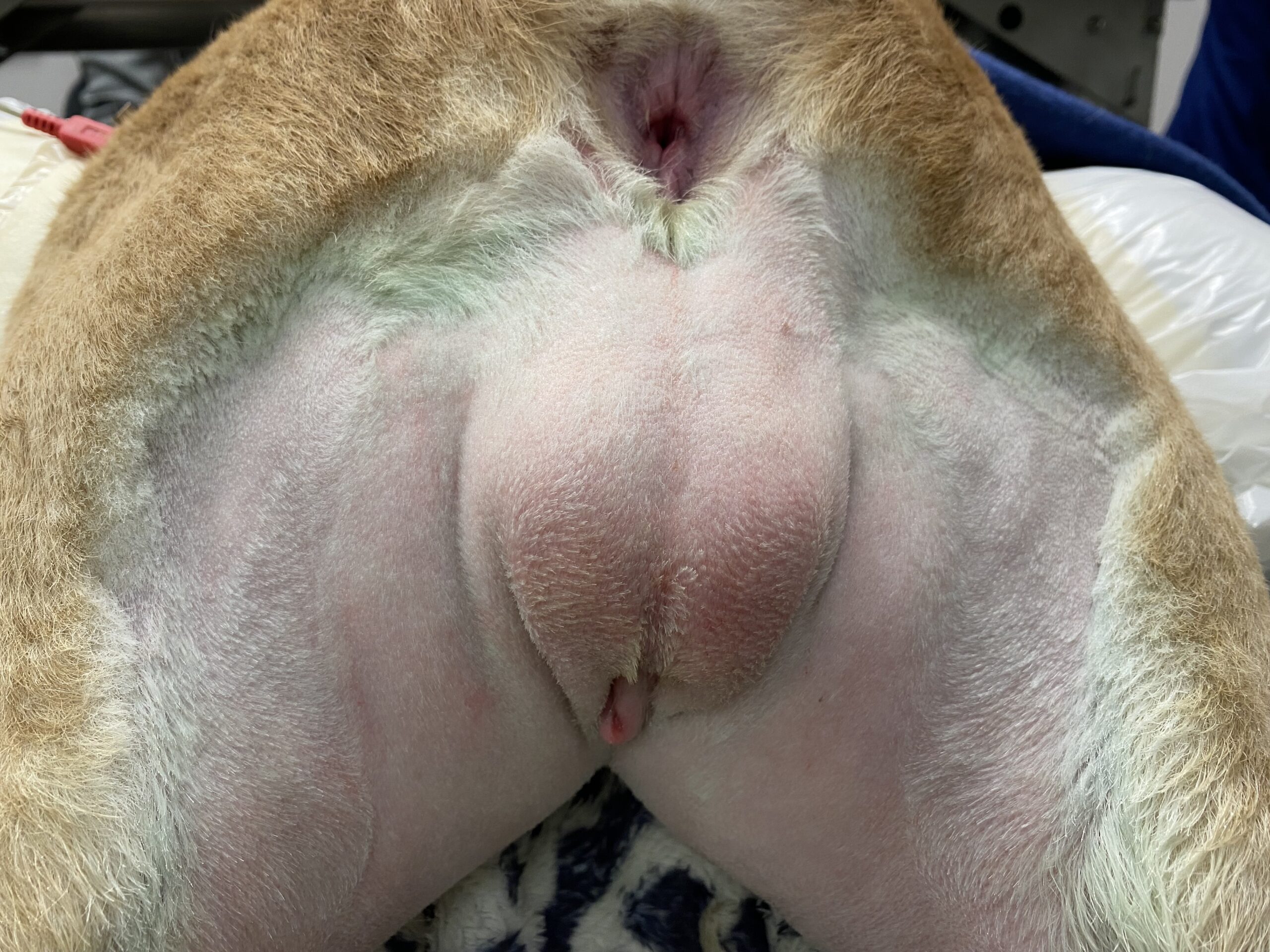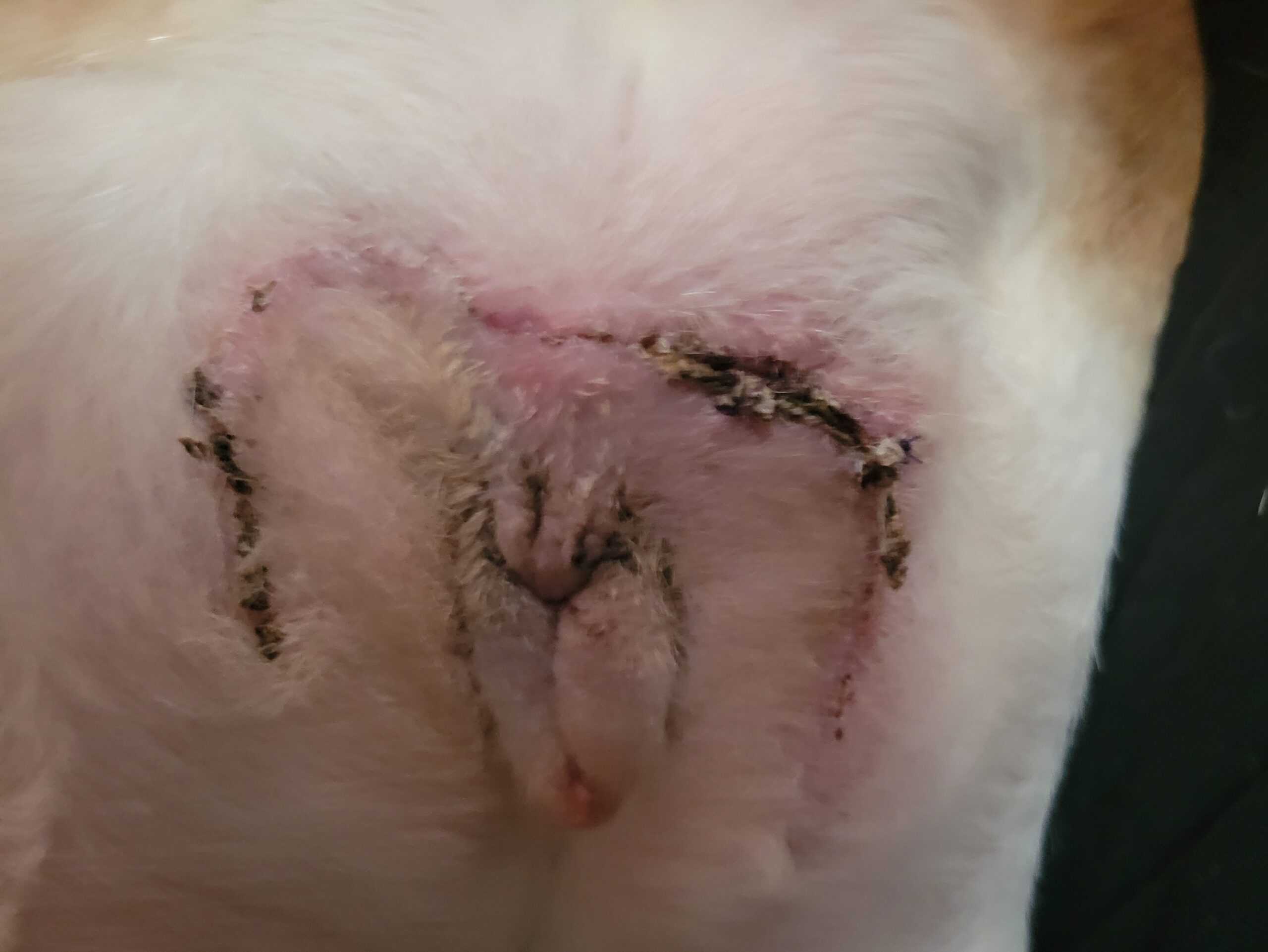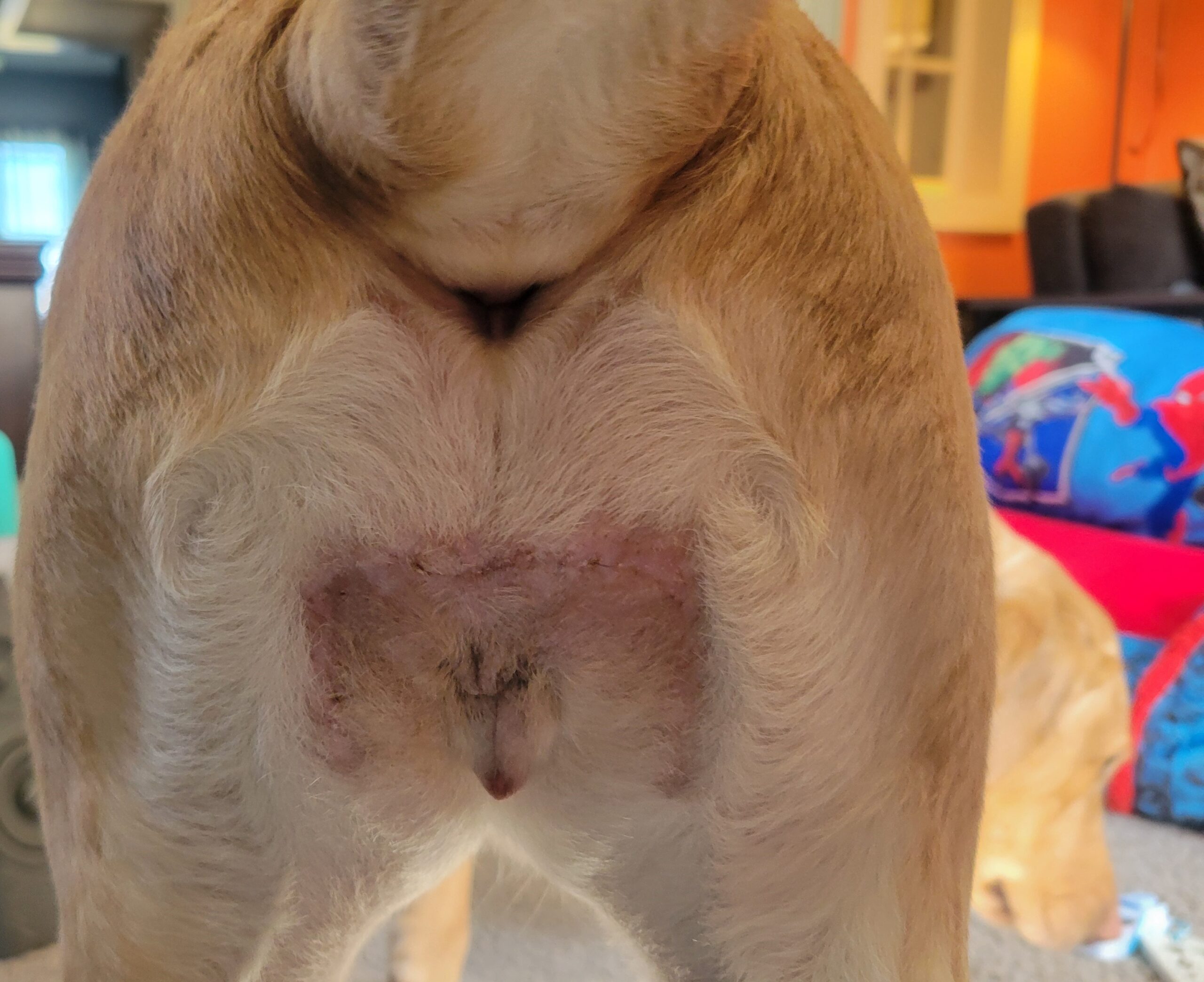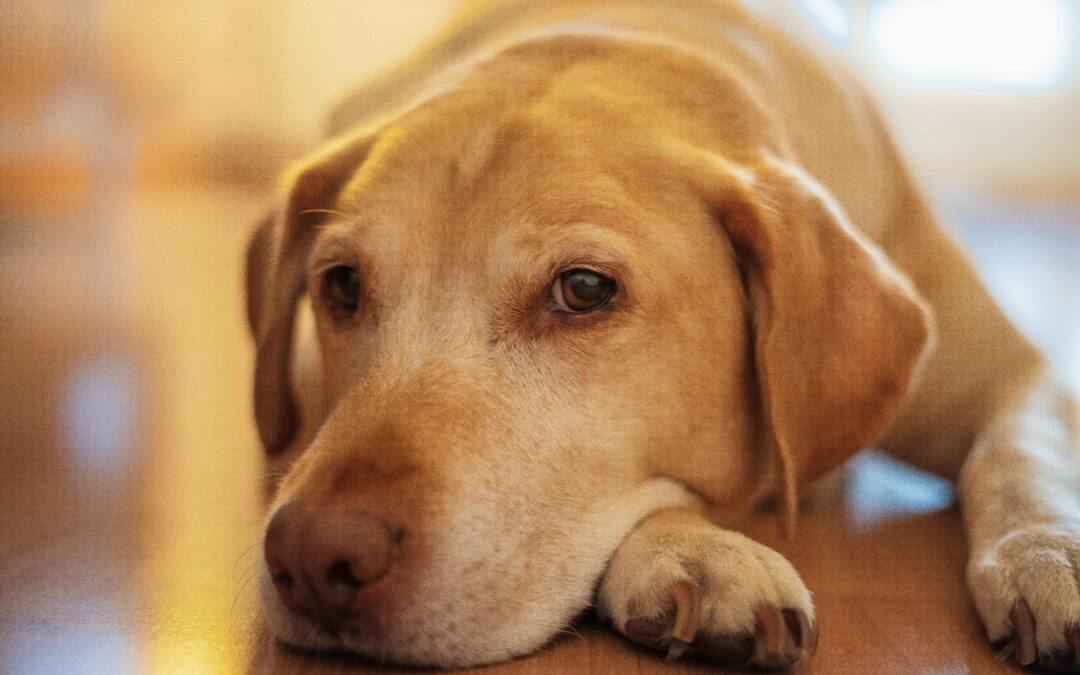Pearl, a 3 year old Lab, had had a “ridiculous number of bladder infections” during her short life.
Her owner remembers: “When she was a puppy, our family vet told us she may be prone to bladder infections because of her anatomy.”
Why did Pearl have bladder infections?
Be prepared for a very sensitive conversation about a very delicate area: the vulva.
Pearl had an extra skin fold covering her vulva.
This createad a pocket that allowed urine to sit there, and a constantly wet, dark, warm environment that was perfect for skin bacteria to thrive.
This caused a localized skin infection.
In turn, bacteria traveled from the skin to the urethra, then into the bladder, which created repeated bladder infections.
How often did Pearl have bladder infections?
“She got bladder infections every few months at the beginning, but then over the last year, they increased in frequency. They occurred every other month or so, and then monthly, then even more often over the last 6 months.”
“Every time we finished a round of antibiotics and she had a clear urine test, we tested her urine again within a week, and we started the cycle all over again. We were constantly giving Pearl antibiotics and probiotics to help maintain gut health.
What signs did Pearl have during bladder infections?
Pearl’s signs included typical symptoms of a bladder infection: licking, frequent urination, and foul-smelling urine.
Other classic signs may include scooting, an urge to urinate, asking to go outside multiple times, “accidents” in the house, bloody urine, and loss of bladder control (a.k.a. urinary incontinence).
What was Pearl’s diagnosis?
There are several names for her condition, including:
- Redundant vulvar fold (you can clearly see the extra skin covering her vulva in the picture below)
- Vulvar fold dermatitis
- Hooded vulva
- Infantile vulva
- Recessed vulva

Before surgery, you could barely see Pearl’s vulva
What treatment did Pearl get to treat her bladder infections?
“She was treated with antibiotics every time she had an infection. And we used antibacterial/antifungal wipes every other day.”
She also received cranberry supplements that “support your dog’s urinary tract health”.
Unfortunately, this didn’t do much.
The treatment may have helped, but only temporarily.
It’s sort of a BandAid approach.
Why?
Because of the big skin fold.
The wipes and oral antibiotics treated the infection… which came right back since the source of the problem wasn’t removed.
Removing the extra skin fold surgically is the only definitive treatment, to prevent bacteria from thriving.
What is the surgical treatment?
The surgery, called episioplasty or vulvoplasty, involves removing the entire extra skin fold.
The surgery is a bit technical, in the sense that if we don’t remove enough skin, then the surgery won’t be as successful.
But if the surgeon removes too much skin, then it can be difficult if not impossible to stitch the skin up.
Or the excessive pressure along the stitches may cause the incision to open up. Such frustrating complications are avoided with experience.
Either an experienced family vet or a board-certified surgeon can perform the procedure.
Pearl’s owner commented: “We were ready for surgery, but we didn’t realize how much extra skin she had. It was a little more extensive than we anticipated. which caused more stress.”
Pearl did great through surgery and anesthesia.
Below is Pearl’s vulva right after surgery, still in the OR.

After surgery, you can clearly see Pearl’s vulva, with the skin incision around it.
The day after surgery, Pearl went home.
“I was so happy to see Pearl” remembers her owner. “I could have cried. She didn’t seem overly stressed, her tail was wagging, and she didn’t seem to be in terrible pain. I was so relieved to see that she was doing so well.”
What was Pearl’s plan at home?
Pearl now needed to rest to allow the incision to heal properly. She also had to wear a plastic cone (E collar) around her neck to prevent her from licking her backend – which had become a bad habit. We needed to break the habit, prevent her from delaying healing, and prevent her from opening up the incision. She received pain medications and antibiotics.
After 3 weeks, the incision had healed nicely and Pearl could slowly resume normal activity.

Three weeks after surgery, the incision is a bit scabby but healed nicely. Pearl could resume her normal activity.
And after 6 weeks, everything was back to normal.

Six weeks after surgery, the incision is completely healed.
What was the result of Pearl’s surgery?
There was no more licking, a normal frequency of urination (peeing), and no more foul-smelling urine.
This is a common and frustrating condition.
Surgery typically leads to great results and a much better quality of life.
Most pet owners are very grateful and happy with the end-result.
Her owner concludes: “We are now 6 weeks out from surgery and Pearl hasn’t had a bladder infection at all since. She was back to her normal activities in a few weeks and she now seems more comfortable, energetic, and playful. I can only imagine how bad she may have felt when she always had infections.”
If you would like to learn how we can help your pet with safe surgery and anesthesia, please contact us through www.HRVSS.com
Never miss a blog by subscribing here: www.HRVSS.com/blog
Phil Zeltzman, DVM, DACVS, CVJ, Fear Free Certified
Pete Baia, DVM, MS, DACVS

